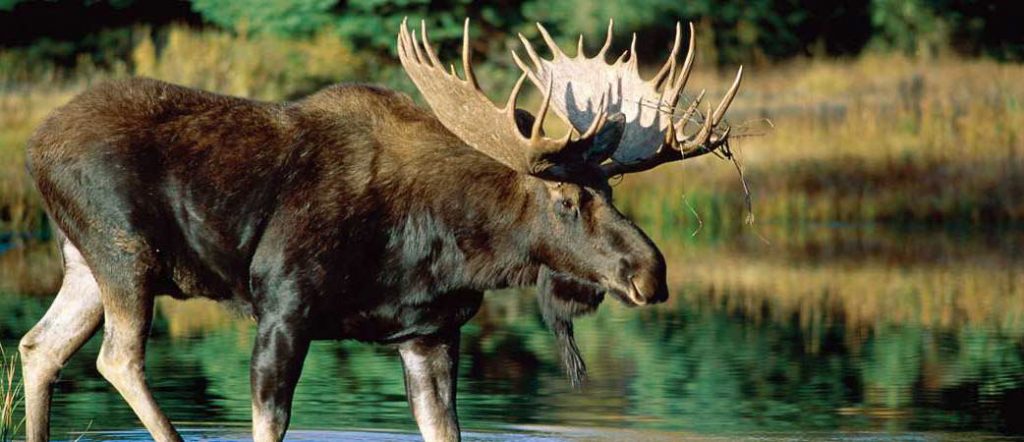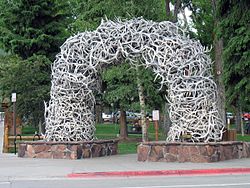Whose Antlers Are Those?

Jackson Hole and Grand Teton National Park host annual animal and bird surveys – and the Christmas Bird Count was one of my father’s favorite events of the year. It seems as though birds and other residents of our ecosystem would be easier to spot in winter, when the seasonal background is mostly white and grey. You’d think that the mighty Bull Moose would be the easiest to spot. And they’re definitely here. Wildlife-spotters can find them around Blacktail Butte, along the Gros Ventre River corridor, and along the highway from the Wilson Bridge to Teton Village (an especially hazardous area for moose due to heavy vehicle traffic). But the Bull Moose, like many antlered animals in our neighborhood, wears a winter disguise.
Flashback to 1992, when my wife was working in a jewelry store on the Jackson Hole town square. A visitor from some coastal city stopped in to shop, and commented on Jackson’s famous antler arches. “How horrible,” she lamented, “that so many beautiful creatures had to be killed to make those disgusting arches!” Eager to set her mind at ease, my wife happily informed this out-of-towner that members of the deer family – like elk, moose, and mule deer – shed their antlers after the fall rut and regrow them the following spring. This visitor’s eyes widened in disbelief. “That’s completely ridiculous. What kind of fool do you take me for?” Needless to say, she left the store empty handed.
Which brings us back to the Bull Moose. You’ll see them in our valley all winter – but for the short period between shedding their antlers and growing new ones, they’ll look just like cow Moose. Clever, indeed!
Bull Moose sheds their antlers late in the year, during what is usually the coldest part of winter. The antlers can weigh up to 40 pounds, and shedding them confers an immediate benefit, as the Moose can conserve precious energy by dropping that load. Shed antlers are eaten by the small furry denizens of Grand Teton National Park – mice, squirrels, foxes, coyotes – and provide a much-needed source of calcium. Which is why the Park Service prohibits antler collection within the boundaries of Grand Teton and Yellowstone Parks.
But outside the park, every May, the Jackson District Boy Scouts gather shed antlers in the National Elk Refuge just north of town, where thousands of elk spend much of each winter. Last year, they collected more than 9,500 pounds of antlers – and sold them for nearly $20 a pound. 75% of the auction proceeds support the Refuge’s habitat enhancement projects, irrigation program, and weed management. The remaining 25% funds the Boy Scouts. And no elk were harmed in the process!
(Video courtesy of National Geographic.)

